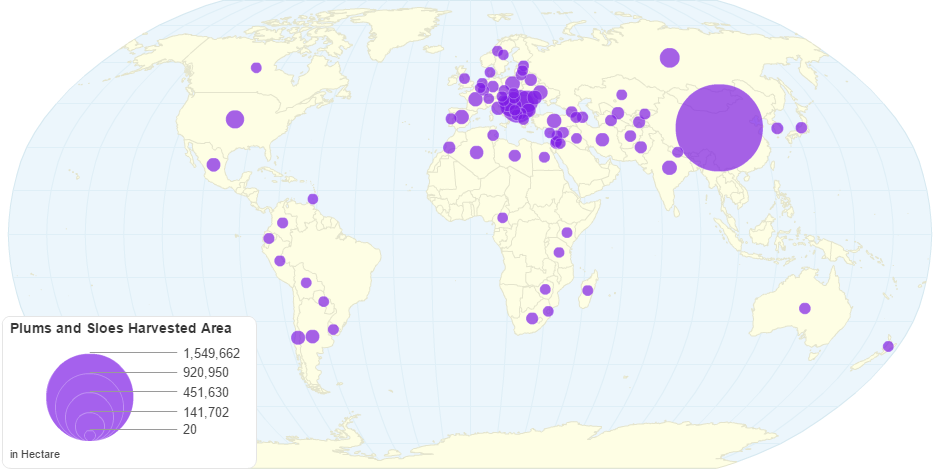This chart shows Plums and Sloes Harvested Area by Country.
A plum is a fruit of the subgenus Prunus of the genus Prunus. The subgenus is distinguished from other subgenera in the shoots having terminal bud and solitary side buds, the flowers in groups of one to five together on short stems, and the fruit having a groove running down one side and a smooth stone.
Mature plum fruit may have a dusty-white waxy coating that gives them a glaucous appearance. This is an epicuticular wax coating and is known as "wax bloom". Dried plum fruits are called dried plums or prunes, although prunes are a distinct type of plum, and may have predated the fruits now commonly known as plums.
Prunus spinosa (sloe) is a species of Prunus native to Europe, western Asia, and locally in northwest Africa.It is also locally naturalised in New Zealand and eastern North America. The fruit is similar to a small damson or plum, suitable for preserves, but rather tart and astringent for eating, unless it is picked after the first few days of autumn frost. This effect can be reproduced by freezing harvested sloes.
The juice is used in the manufacture of spurious port wine, and used as an adulterant to impart roughness to genuine port.In rural Britain, so-called sloe gin is made from the fruit, though this is not a true gin, but an infusion of gin with the fruit and sugar to produce a liqueur. In Navarre, Spain, a popular liqueur called pacharán is made with sloes.
9 years ago

